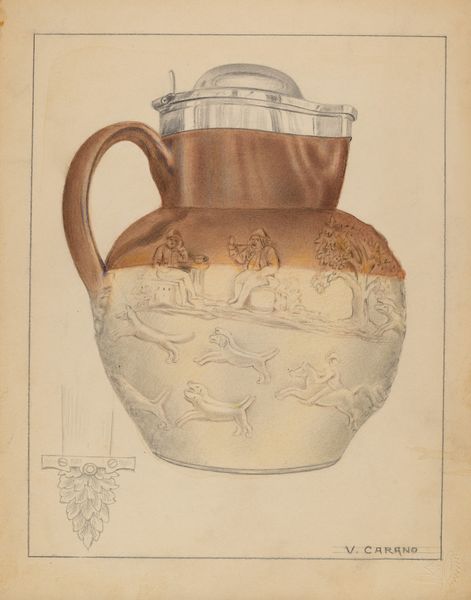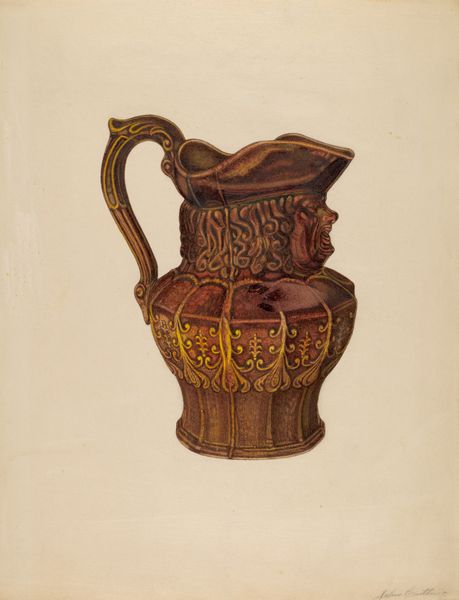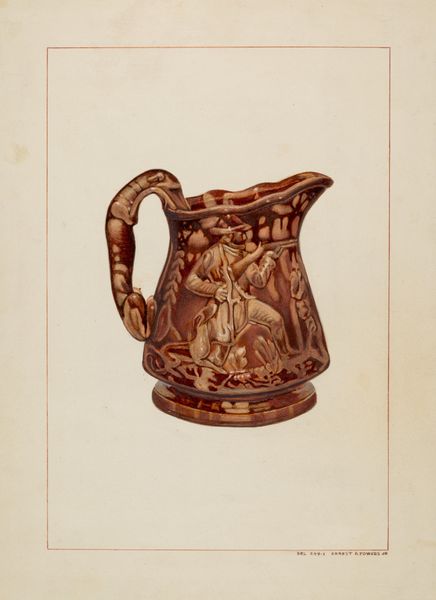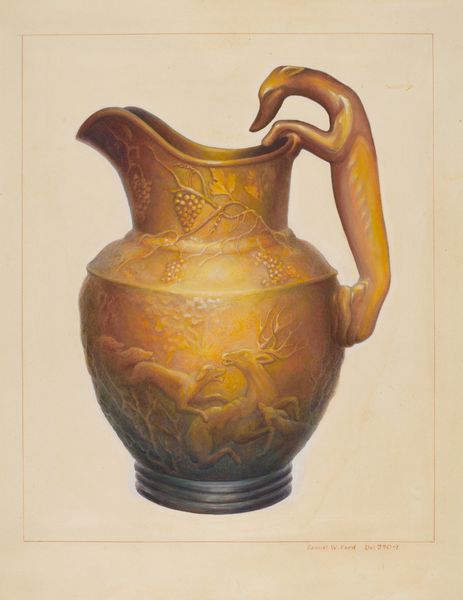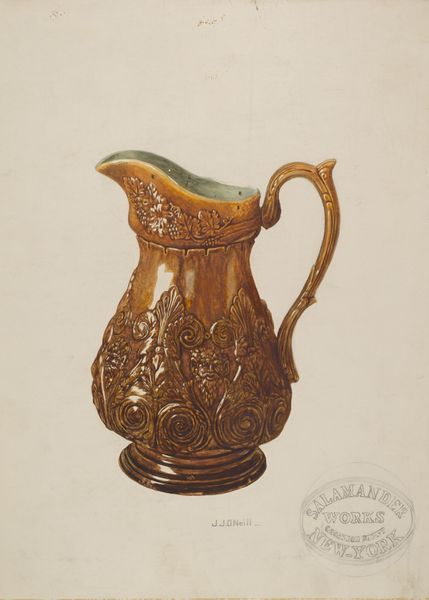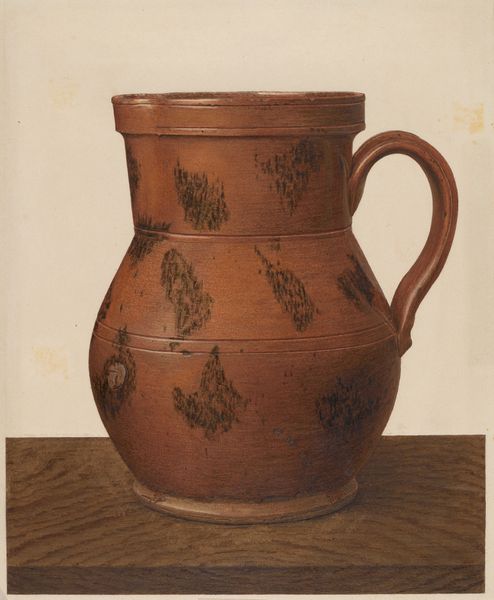
drawing, watercolor
#
drawing
#
oil painting
#
watercolor
#
coloured pencil
#
watercolour illustration
#
watercolor
Dimensions: overall: 30.8 x 22.8 cm (12 1/8 x 9 in.)
Copyright: National Gallery of Art: CC0 1.0
Editor: This is Charles Caseau’s “Pitcher,” made around 1936 using watercolor and other drawing media. There’s something almost dreamlike about the intricate details, like a scene lifted from a fairy tale. What catches your eye when you look at it? Curator: The immediate resonance is the hunt, isn't it? Observe how the vineyard motifs, typically symbols of Dionysus and revelry, sit above a scene of the chase. It subtly presents the duality of pleasure and primal instinct. What do you make of that contrast? Editor: I hadn't thought about it that way, but I see what you mean. The grapes and vines are celebratory, and yet there's this undercurrent of predator and prey, life and death, running below. It feels deliberately juxtaposed. Curator: Indeed. And it echoes older mythologies, think Actaeon, hunted by his own hounds after seeing Diana bathing. Is it just a beautiful pitcher, or is it commenting on the darker sides of desire and consequence through those iconic motifs? The very medium used hints to transparency. Does that open a gate into understanding, perhaps? Editor: So, by using a transparent medium like watercolor, the artist hints that these themes are underlying realities, always present, if you look closely enough? Curator: Precisely. It is a constant play between layers of cultural understanding, challenging our perception of everyday objects, almost, if one may add, imprinting emotional memory onto mundane materials. Editor: I’ll never look at a pitcher the same way again. This piece is so much more complex than I initially thought! Curator: It serves as a good exercise to understanding the depth of cultural memory carried within even the simplest forms, indeed.
Comments
No comments
Be the first to comment and join the conversation on the ultimate creative platform.



